
This month marks the 125th anniversary of the National Geographic Society, highlighting its journey from a small scientific body created “to increase and diffuse geographic knowledge” to one of the world’s largest educational and scientific organisations.
Founded in Washington D.C on January 13, 1888 by a group of 33 of the city’s scientific and intellectual leaders, the first issue of the magazine was published the same year as a modest-looking scientific brochure, featuring a scholarly report on: “The Classification of Geographic Forms by Genesis”.
Two years later the Society sponsored its first expedition — to explore and survey Mount St. Elias in Alaska. By 2012, the Society had funded more than 10,000 scientific research, conservation and exploration projects. Throughout its 125-year history the National Geographic magazine has been enchanting us with photographs and features from the furthest corners of the earth.
From the Society's expansive timeline, highlights include the excavation of Peru's Machu Picchu in 1912, the first flight over the South Pole in 1929, Apollo 11 astronauts carrying the National Geographic Society flag to the moon and a ground-breaking report on the discovery of 3.6 million-year-old footprints in Tanzania, believed to be from the slow-walking ancestors of modern man.
In celebration of the event, National Geographic is hosting a live Google+ event where you can hang out with great explorers on seven continents.
The Society has also released a collection of the most unforgettable moments from their history, including the excavation of ancient Egypt, a baby chimp's brush with mankind and a giant leap for Buzz Aldrin.
Take a look at our choice of some of the best photographs produced by the National Geographic Society:
1938 - EGYPT
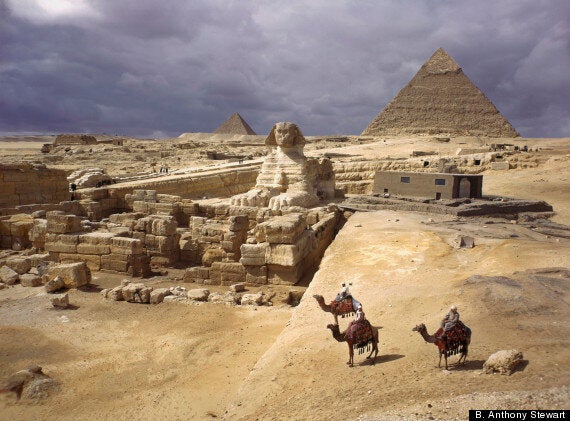
Three figures on camelback behold the pyramids of Giza.
LA VENTA, TABASCO. MEXICO
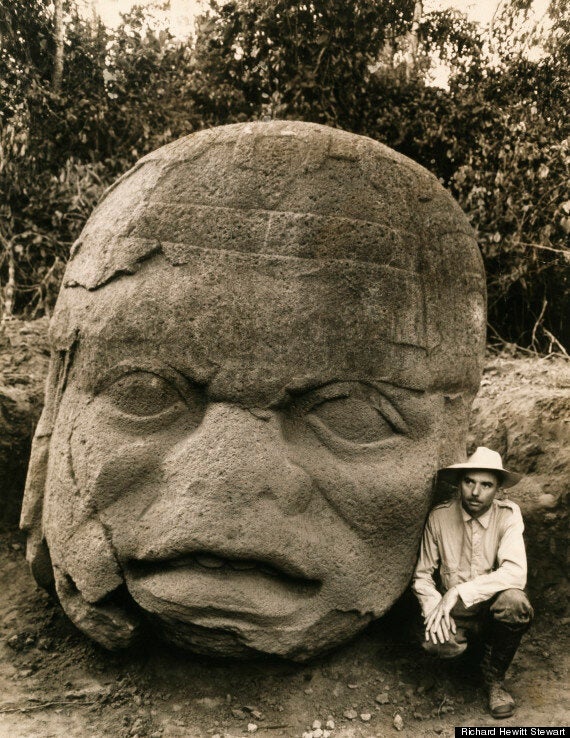
Beginning in 1938, Matthew Stirling, chief of the Smithsonian Bureau of American Ethnology, led eight National Geographic-sponsored expeditions to Tabasco and Veracruz in Mexico. He uncovered 11 colossal stone heads, evidence of the ancient Olmec civilization that had lain buried for 15 centuries.
1964 - TANZANIA
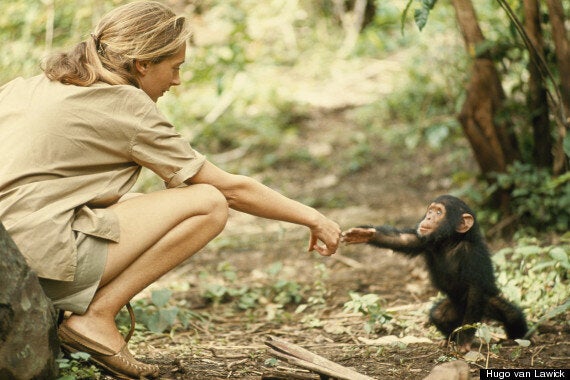
A touching moment between primatologist and National Geographic grantee Jane Goodall and young chimpanzee Flint at Tanzania’s Gombe Stream Reserve.
1969 - THE MOON
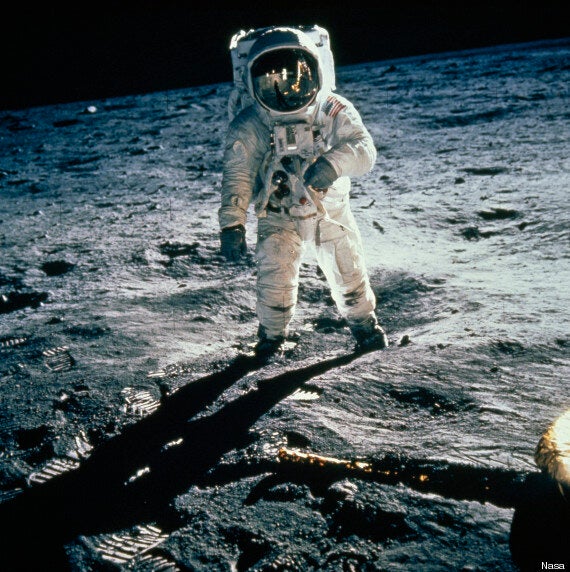
Astronaut Buzz Aldrin walks on the Moon’s Sea of Tranquility, his visor reflecting Neil Armstrong and the lunar module Eagle. The Apollo 11 astronauts carried the National Geographic Society flag with them on their journey to the Moon.
COCOS ISLAND, COSTA RICA
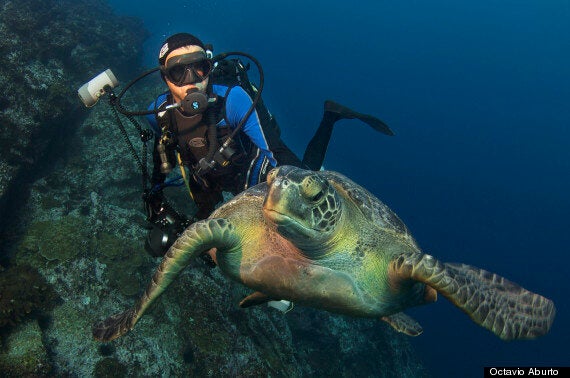
Marine biologist and National Geographic Explorer-in-Residence Enric Sala dives with a green turtle off Cocos Island, Costa Rica. Sala leads National Geographic’s Pristine Seas project, which aims to find, survey and help protect the last healthy and undisturbed places in the ocean.
Flick through more historical National Geographic photographs:
Take a look at the winning photos from the recent 2012 National Geographic Photo Contest:
Milestones In National Geographic History
Jan. 13, 1888: Thirty-three founding members meet at the Cosmos Club, Washington, D.C., to create “a society for the increase and diffusion of geographic knowledge.”
October 1888: First issue of National Geographic magazine is sent to 200 charter members.
July 1890:National Geographic publishes its first photograph — a glimpse of Herald Island, Russia, taken from the deck of a ship.
1890-91: First National Geographic Society-sponsored expedition maps the Mount St. Elias region, Alaska and discovers Mount Logan, Canada’s highest peak. By 2012, the Society has funded more than 10,000 scientific research, conservation and exploration projects.
July 1906: Grosvenor publishes George Shiras III’s pioneering flash photographs of animals at night; two Society board members resign in disgust, claiming magazine is turning into a “picture book.”
1941: National Geographic Society opens its storehouse of photographs, maps and other cartographic data to President Roosevelt and the U.S. armed forces to aid war efforts. The following year, the Society makes a cabinet of National Geographic maps for Winston Churchill.
September 1959: Colour photographs begin to appear regularly on magazine cover.
1967: Dian Fossey begins long-term Society-funded study of mountain gorillas in Rwanda.
July 1969:Apollo 11 astronauts carry National Geographic Society flag to the moon.
April 1979: Mary Leakey reports discovery of 3.6 million-year-old footprints believed to be from the slow-walking ancestors of modern man, in the volcanic ash of a riverbed in Tanzania.
1984: Undersea archaeology pioneer George F. Bass, supported by the Society, discovers most extensive collection of Bronze Age trade goods ever found beneath the sea in a 3,400-year-old shipwreck off southern Turkey.
September 1985: Results of R.M.S. Titanic discovery announced at Society by Robert D. Ballard.
June 1996: Society launches its website: www.nationalgeographic.com.
September 1997: National Geographic enters cable television market launching in the United Kingdom, Scandinavia and Australia. By 2012 National Geographic Channels reach 440 million subscribers in 171 countries in 38 languages.
April 1998: National Geographic produces its first large-format film, “Mysteries of Egypt.”
March 2002: National Geographic announces it has located Sharbat Gula, the “Afghan Girl,” who appeared on the cover of the June 1985 issue of National Geographic magazine. Her photograph becomes the most recognized in the magazine’s history.
March 2012: Explorer-in-residence, James Cameron, becomes first person to dive solo to the Mariana Trench as part of DEEPSEA CHALLENGE, a joint scientific expedition by Cameron, National Geographic and Rolex to conduct deep-ocean research and exploration.